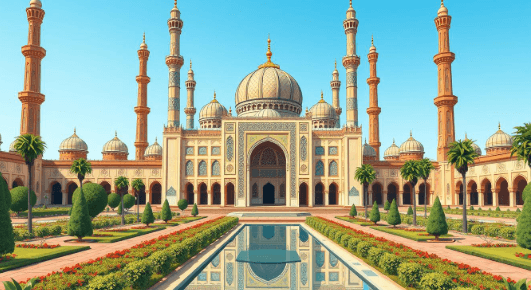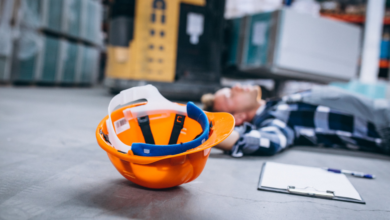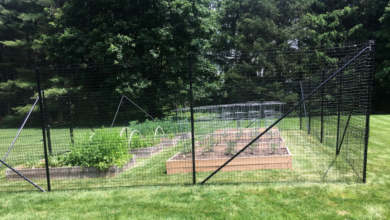Modern Islamic Architecture: Heritage Meets Innovation

Modern Islamic architecture shows how Gulf countries can respect their rich culture while using new ideas and technology. As cities like Dubai, Abu Dhabi, and Doha become famous for their buildings, architects are creating structures that mix traditional Islamic design with today’s building methods and green practices.
This building style is more than just looks—it shows our cultural identity, spiritual beliefs, and future hopes. From the geometric patterns that remind us of old traditions to adding smart building technologies, modern Islamic architecture is creating a new story in our cities. Today’s architects have a special job: they must create buildings that both local people and visitors from around the world can appreciate, keeping our authentic culture while using global architectural trends.
The way buildings are designed today combines respect for our past with excitement for the future. This approach makes sure our rich cultural heritage stays alive even as our countries grow and change rapidly.
Historical Foundation of Islamic Architecture
Origins and Early Development
Islamic architecture started in the 7th century when Islam spread from the Arabian Peninsula. The first mosques were simple buildings made with local building methods that focused on prayer rather than fancy designs. It began with Al-Masjid al-Nabawi in Medina around 622 CE, setting basic rules that still guide modern designs today.
The building style grew and changed as the Islamic world met different cultures, traditions, and building ways. When Muslims came to new cities, they would look at what was already there, get ideas from it, and make it better. This way of learning and adapting created many different building ideas that today’s architects still use.
See also: 5 Common Home Improvement Mistakes and How to Avoid Them – Avoid These Costly Blunders Today
Classical Elements and Their Modern Interpretations
Old Islamic architecture created several important features that define the style:
Patterns and Sacred Shapes: Islamic geometric patterns represent cosmic order and God’s unity. In today’s buildings, these patterns appear in modern building fronts, interior design, and structure parts, often made better with digital creation tools.
Domes and Arches: The pointed arch and dome became the main signs of Islamic architecture. Tall minarets, smooth domes, pointed arches and detailed decorations create a familiar feeling from East to West. Today’s versions use these shapes with new materials and building systems.
Mashrabiya and Light Control: Traditional wooden screen panels have become sophisticated modern uses. For hundreds of years, dry places have solved problems of light, privacy, and heat through an important feature of Islamic and Arab architecture, the mashrabiya.
Core Principles of Modern Islamic Architecture
Sustainability and Environmental Harmony
Modern Islamic architecture embraces environmental consciousness rooted in Islamic principles. Traditional Islamic architecture relied on basic sustainability principles, which can be useful indicators for the contemporary sustainable house design. Contemporary architects integrate these time-tested approaches with modern green building technologies.
Passive Cooling Strategies: Traditional techniques like courtyards, wind towers (barjeel), and strategic building orientation are being reinterpreted using modern materials and smart building systems. These approaches reduce energy consumption while maintaining cultural authenticity.
Water Conservation and Management: Islamic architectural tradition emphasizes water conservation, a principle increasingly relevant in Gulf climates. Modern projects incorporate advanced water recycling systems, drought-resistant landscaping, and innovative irrigation technologies.
Cultural Identity and Global Context
The challenge of maintaining cultural identity while engaging with global architectural trends defines much of modern Islamic architecture in the Gulf. Islamic Architecture, on the other hand, promotes harmony between buildings, the environment, people, and their Creator.
Neo-Islamic Style Development: Architects are developing what scholars term “neo-Islamic” architecture, where traditional elements are reinterpreted through contemporary design languages and construction technologies.
Local Materials and Global Technologies: Projects increasingly combine local materials like regional stone and traditional craftsmanship with advanced building technologies, creating structures that are both culturally resonant and technologically sophisticated.
Contemporary Design Elements and Innovations
Advanced Facade Systems
Modern Islamic architecture showcases sophisticated facade technologies that reference traditional design principles:
Kinetic Mashrabiya Systems: The motifs are actually 240 photo-sensitive motor-controlled apertures, or shutters, which act as a sophisticated brise soleil that automatically opens and closes to control the amount of light and heat entering the building from the sun. Projects like the Institut du Monde Arabe demonstrate how traditional concepts can incorporate cutting-edge technology.
Perforated Metal Panels: Contemporary interpretations of traditional lattice work utilize laser-cut metal panels, creating intricate patterns that provide shading, privacy, and visual interest while improving building performance.
Structural Innovation and Traditional Forms
Parametric Design Applications: Digital design tools enable architects to create complex geometric patterns and structural systems that would have been impossible to construct using traditional methods. These technologies allow for unprecedented precision in recreating and innovating upon traditional patterns.
Hybrid Structural Systems: Modern projects combine traditional forms like domes and arches with contemporary structural engineering, utilizing materials like steel, concrete, and advanced composites to achieve spans and heights previously impossible.
Iconic Modern Islamic Architecture Projects
UAE: Leading Architectural Innovation
Sheikh Zayed Grand Mosque, Abu Dhabi: In contrast to the heavily modernised skyscrapers of the city, the Sheikh Zayed Grand Mosque continues to stand out as one of the most treasured sites of contemporary UAE society. The mosque exemplifies how traditional Islamic architecture can be realized using contemporary materials and construction techniques.
Louvre Abu Dhabi by Jean Nouvel: “It is a project founded on a major symbol of Arab architecture: the dome. But here, with its evident shift from tradition, the dome is a modern proposal”. The project demonstrates how contemporary architects can reinterpret traditional Islamic architectural elements for modern cultural institutions.
Regional Excellence and Innovation
Museum of the Future, Dubai: This project showcifies the integration of traditional Arabic calligraphy with futuristic architectural form. Traditional Arabic calligraphy undergoes a modern makeover, forming perforations in the tough exterior that bathe the visitors in the glowing script.
Burj Khalifa Integration: The Burj Khalifa, the world’s tallest building, incorporates Islamic design principles through its spiral minaret-inspired structure and geometric patterns. The Y-shaped floor plan is based on traditional Islamic architecture.
Sustainable Design Integration
Traditional Wisdom Meets Modern Technology
Gulf architects increasingly recognize that traditional Islamic building techniques offer valuable lessons for contemporary sustainable design. The concept of sustainability or green architecture is not considered a new term, it is rather a concept embodied by the traditional architecture in different parts of the world since old ages via spontaneous and experimental compatibility.
Climate-Responsive Design: Modern projects integrate traditional passive cooling strategies with contemporary HVAC systems, smart building controls, and renewable energy technologies to create high-performance buildings that respond to Gulf climate conditions.
Material Innovation: Clay is the best natural building material, since it can provide heat isolation. It also helps to reduce the depletion of vital natural resources and carbon emissions. Contemporary projects explore advanced materials that offer similar performance benefits while meeting modern building codes and performance standards.
Green Building Certifications and Islamic Principles
The integration of Islamic architectural principles with international green building standards creates opportunities for projects to achieve both cultural authenticity and environmental performance. LEED, BREEAM, and other rating systems increasingly recognize traditional building techniques and their environmental benefits.
Water Features and Conservation: Traditional Islamic gardens and water features are being reinterpreted through modern water recycling technologies, creating cooling effects while minimizing water consumption.
Energy Performance: Projects combine traditional shading strategies with modern solar panels, advanced glazing systems, and smart building technologies to achieve net-zero or positive energy performance.
Cultural and Social Dimensions
Community and Privacy
Islamic architectural tradition emphasizes community interaction while respecting privacy. Modern interpretations of these principles appear in contemporary residential developments, mixed-use projects, and cultural facilities throughout the Gulf region.
Courtyard Concepts: Traditional courtyard houses inspire modern residential and commercial developments that create semi-private spaces, encourage social interaction, and provide climate-controlled outdoor areas.
Gender-Sensitive Design: Contemporary projects thoughtfully integrate traditional concepts of privacy and gender separation into modern building programs, creating flexible spaces that can accommodate diverse cultural practices.
Spiritual and Cultural Expression
Contemporary Mosque Design: Modern mosque architecture in the Gulf region demonstrates how traditional spiritual architecture can embrace contemporary design languages while maintaining religious authenticity and functionality.
Cultural Institution Design: Museums, libraries, and cultural centers increasingly draw from Islamic architectural traditions while serving contemporary programmatic needs and international audiences.
Technological Integration and Smart Building Systems
Building Information Modeling (BIM) and Islamic Patterns
Advanced design technologies enable architects to create more sophisticated interpretations of traditional Islamic geometric patterns. BIM systems allow for precise modeling of complex geometries, optimizing both aesthetic and performance characteristics.
Parametric Pattern Generation: Computational design tools enable architects to generate and modify traditional Islamic patterns, creating variations that respond to specific site conditions, functional requirements, and performance criteria.
Fabrication Technologies: CNC machining, 3D printing, and other digital fabrication technologies allow for precise execution of complex traditional patterns in contemporary materials.
Smart Building Integration
Responsive Environmental Systems: Modern Islamic architecture increasingly incorporates smart building technologies that automatically adjust lighting, ventilation, and shading systems based on environmental conditions and occupancy patterns.
Cultural Programming Systems: Advanced building management systems can accommodate diverse cultural and religious practices, automatically adjusting building systems for prayer times, cultural events, and seasonal observances.
Regional Variations and Local Adaptations
Gulf-Specific Design Responses
Each Gulf country has developed its own interpretation of modern Islamic architecture, reflecting local culture, climate, and development goals:
UAE Innovations: The UAE leads in integrating international architectural talent with local cultural requirements, creating projects that serve as global landmarks while maintaining cultural authenticity.
Saudi Vision 2030 Projects: Saudi Arabia’s massive development projects increasingly emphasize cultural heritage integration with modern functionality, as seen in projects like NEOM and the Red Sea Project.
Qatar’s Cultural District: In addition to the Louvre Abu Dhabi, these are to include: the Zayed National Museum, on a design by Foster and Partners; the Guggenheim Abu Dhabi contemporary arts museum by Frank Gehry, expected to be the world’s largest Guggenheim; a performing arts centre designed by Dame Zaha Hadid.
Climate Adaptations
Gulf architects must address extreme climate conditions while maintaining cultural authenticity:
Desert Climate Solutions: Projects incorporate advanced shading systems, thermal mass strategies, and vegetation selection that responds to desert conditions while creating comfortable outdoor spaces.
Coastal Considerations: Buildings along the Gulf coast integrate traditional wind-catching strategies with modern structural systems designed to withstand extreme weather events and salt air exposure.
Future Trends and Emerging Directions
Next-Generation Islamic Architecture
Biomimetic Interpretations: Emerging projects explore how traditional Islamic geometric patterns can be informed by biomimetic design principles, creating structures that respond more dynamically to environmental conditions.
Mixed Reality Integration: Advanced building systems increasingly incorporate augmented and virtual reality technologies that can enhance the experience of traditional Islamic spatial concepts and decorative programs.
Sustainability Leadership
Gulf countries position themselves as leaders in sustainable development, with Islamic architectural principles providing a framework for environmentally responsible design:
Carbon Neutral Developments: Major projects aim for carbon neutrality by combining traditional passive strategies with renewable energy systems and advanced building technologies.
Circular Economy Integration: Projects increasingly incorporate principles of circular economy, using recyclable materials and designing for disassembly and reuse.
Economic and Development Implications
Tourism and Cultural Economy
Modern Islamic architecture serves as a significant driver of cultural tourism and economic development throughout the Gulf region:
Destination Architecture: Iconic projects like the Louvre Abu Dhabi and Museum of the Future create international destinations that attract millions of visitors annually.
Local Economic Impact: Construction and maintenance of sophisticated Islamic architecture projects create employment opportunities for local craftspeople, engineers, and construction professionals.
Real Estate and Investment Trends
Cultural Premium: Properties that successfully integrate Islamic architectural elements often command premium prices in Gulf real estate markets.
Sustainable Value: Projects that combine cultural authenticity with environmental performance create long-term value for investors and communities.
Challenges and Opportunities
Balancing Tradition and Innovation
Authenticity Concerns: Islamic Architecture aims to bridge the gap between the old and the new with its integrative approach without compromising on the values of both. Architects must navigate between maintaining cultural authenticity and embracing contemporary innovation.
Skill Development: The shortage of craftspeople skilled in traditional Islamic architectural techniques creates both challenges and opportunities for professional development and education.
Regulatory and Code Compliance
Building Code Integration: Traditional Islamic architectural elements must be adapted to meet contemporary building codes, fire safety requirements, and accessibility standards.
Heritage Preservation: Balancing new development with preservation of existing Islamic architectural heritage requires sophisticated planning and regulatory frameworks.
Best Practices and Implementation Guidelines
Design Process Integration
Cultural Consultation: Successful projects typically involve cultural consultants and religious scholars early in the design process to ensure appropriate interpretation of Islamic architectural principles.
Community Engagement: Meaningful community consultation helps ensure that projects serve local needs while respecting cultural values and traditions.
Material and Technology Selection
Performance-Based Design: Selection of materials and technologies should prioritize both cultural appropriateness and building performance, creating structures that are both meaningful and functional.
Lifecycle Considerations: Projects should consider the long-term maintenance and evolution of Islamic architectural elements, planning for both preservation and adaptation over time.
Conclusion
Modern Islamic architecture in the Gulf Countries represents a remarkable synthesis of cultural heritage, environmental responsibility, and technological innovation. As the region continues to develop as a global destination for architecture and culture, projects that successfully integrate traditional Islamic design principles with contemporary building practices create lasting value for communities and visitors alike.
The future of Islamic architecture lies not in choosing between tradition and modernity, but in creating sophisticated syntheses that honor cultural heritage while embracing innovation. Islamic architecture represents a remarkable journey of cultural adaptation and spiritual expression, and this journey continues through contemporary projects that push the boundaries of what is possible while remaining rooted in cultural authenticity.
Gulf architects and developers who embrace this integrative approach create projects that serve as models for cultural architecture worldwide, demonstrating how traditional building practices can inform contemporary solutions to environmental, social, and technological challenges. The region’s commitment to this architectural evolution positions it as a global leader in culturally responsive, environmentally sustainable design.
As cities throughout the Gulf continue to grow and evolve, modern Islamic architecture provides a framework for development that honors the past while building for the future. The success of these projects depends on continued collaboration between traditional craftspeople and contemporary architects, ongoing innovation in materials and building technologies, and sustained commitment to creating architecture that serves both local communities and global audiences.




